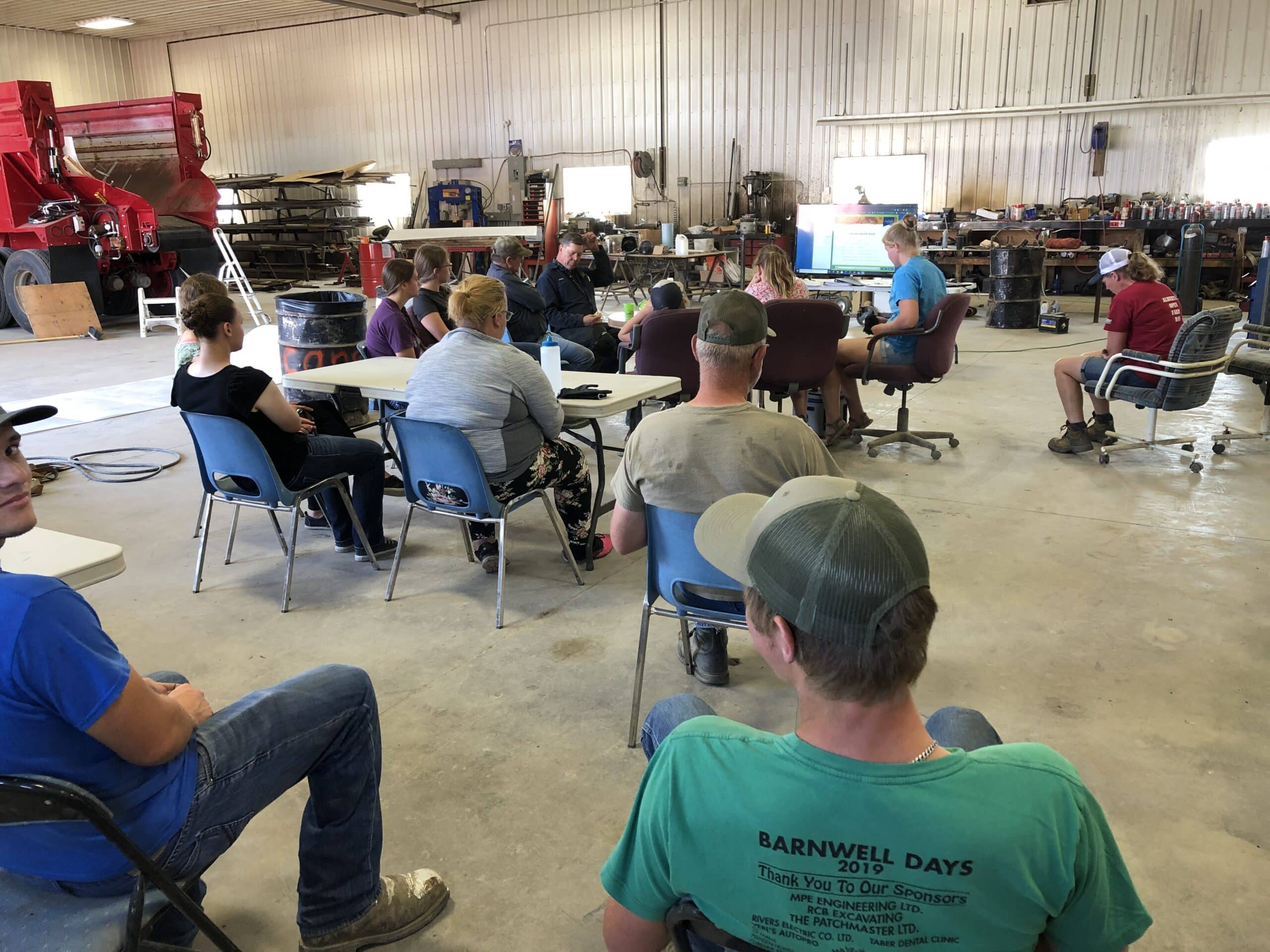Growing farm sizes, increasing mechanization and modern employment standards are causing shifts in the world of agricultural workers on Canadian potato farms.
Michel Camps grew up working on a potato farm — not in Canada but in his home country of Holland. That farm was smaller than the one he owns now in Barnwell, Alta. and didn’t require extra staff to keep it running.
“Before we bought our own farm in 2002, I actually worked for another potato farmer in the area. And I learned a lot about employee management from him,” Camps says in a phone interview.
Camps originally came to Canada through a Dutch exchange student program. He spent two years working on a farm in Alberta where he learned the dynamics of Canadian potato farming and how to manage a staff. He now runs CP Farms Ltd., a 4,000-acre irrigated processing potato farm with a staff that ranges from five to 20. His wife Hanneke handles most of the human resources work including the hiring of seasonal employees.
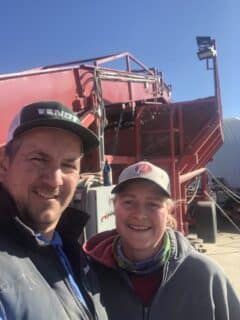
In Alberta, CP Farms Ltd. finds themselves battling against the oil industry for skilled workers. In the past, Camps has invested time into training employees only to have them leave a few years later for jobs in the oilfield.
“We’re putting a lot of energy and a lot of effort into training skilled laborer onto some specific potato farm related tasks such as running self-propelled potato harvesters, potato planters, or pivots,” Camps says.
Across Canadian agriculture, all segments are facing struggles when it comes to finding employees. Jennifer Wright, executive director of the Canadian Agricultural Human Resource Council, pointed out in an email that the Canadian labour force overall, and in particular in rural Canada, is shrinking as the baby boomer generation exits the workforce.
“Challenges include rural location of work, not enough awareness of the amazing opportunities to work in agriculture and a misperception of what the industry has to offer by those not in the industry. There is increasing competition for workers from all industries as well and many other industries can provide options to work nine to five, work from home, work in an office environments, for example,” she stated.
The labour shortages in ag ranges and depends on the commodity. Wright said there’s some degree of labour shortages across all commodities in Canada, including potato farms.
On Prince Edward Island, the story is much the same for Bryan Maynard who co-owns Farm Boys Inc. with his brother Kyle Maynard. Farm Boys Inc. is in Arlington, P.E.I. and is a 5,000-acre dryland processing and seed potato farm that employs five full-time staff and 15 seasonal.
“Running a potato farm of this size really requires it to be managed like a business. You’re going to need upwards of 40 people here in the busy time of the season, which is end of September, October,” Maynard explains in a phone interview. “You need many hands in the field in order to do the actual harvesting, and you need even more back at the storage sheds, for the unloading and the proper grading of those potatoes as they go into storage.”
While you may not need those employees all year working on the farm, when the busy seasons come, you need the extra hands to get the work done. Other types of farms such as dairy operations may require year-round labour, but on potato farms the work is concentrated into certain times of year.
Overall, the number of farmers and those working in agriculture is shrinking across Canada. Statistics Canada stated there were 276,977 employees in the agriculture sector in 2021, down 0.6 per cent from 2020. Almost half of all ag employees at 49.9 per cent are seasonal with over one-fifth of those working in greenhouse, nursery, and floriculture operations.
Shifting Trends in Canadian Ag Labour
The changes in ag labour have been well documented in recent years. In April, the Royal Bank of Canada (RBC) released a report titled “Farmers Wanted: The labour renewal Canada needs to build the Next Green Revolution”. The report detailed shifts in ag labour and highlighted various statistics.
By 2033, 40 per cent of Canadian farm operators will retire, placing agriculture on the cusp of one of the biggest labour and leadership transitions in the country’s history, the report said. At the same time, a shortfall of 24,000 general farm, nursery and greenhouse workers is expected to emerge. The number of operators below the age of 55 has declined by 54 per cent since 2001 as well.
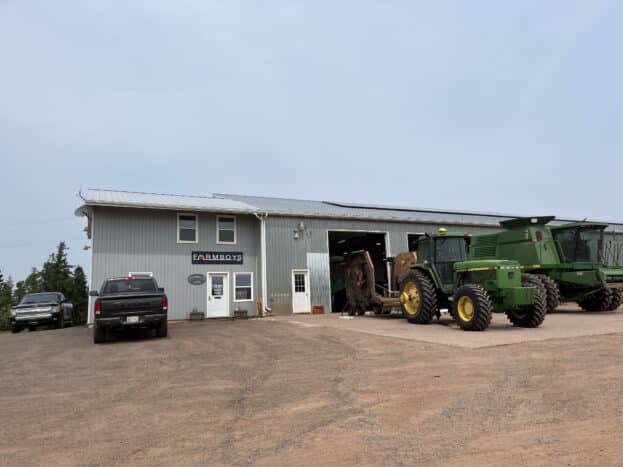
A 2022 report from the Canadian Federation of Independent Business (CFIB) titled “Help Wanted: Labour Shortages Threaten the Future of Canadian Agriculture” shared the impact of labour shortages on ag business across Canada. Through a survey of CFIB members about ag labour, it was found:
- 63 per cent of ag businesses couldn’t fill all employment positions
- Four out of five ag businesses wouldn’t advise someone to start a business because of labour shortages
- 62 per cent of ag business owners found it difficult to recruit staff
To address labour shortages, some Canadian ag businesses do use temporary foreign worker (TFW) programs. These programs allow Canadian employers to hire foreign workers to fill temporary jobs when qualified Canadians aren’t available, Erin Kerbel, a spokesperson for Immigration, Refugees and Citizenship Canada (IRCC), stated in an email.
In 2022 there were 32,510 TFWs working in agriculture in Canada, statistics from IRCC stated. Workers came from various countries with the top being Mexico, India, and Guatemala. The provinces with the highest amounts of TFWs were Ontario, Quebec, and British Columbia. While some workers in the TFW program only want to live in Canada during the work season, many permanently settle in Canada, with 7,560 TFWs becoming permanent residents in 2022.
Finding Employees for the Farm
Camps and Maynard have approached filling the labour shortages on their farms in different ways. Camps uses a mix of local and international labour, while Maynard hires all local employees on his farm.
For his employees, Camps has tapped into his area’s local Mennonite population. The Mennonites in his region don’t work Sundays which has makes them shy away from working jobs on the oilfield. During the growing season, Camps takes advantage of the Dutch exchange student program he took part in when he was younger and brings over up to four people from Holland over to work on the farm.
“The Mennonite guys drive truck, and they work in a shop. And then we have our Dutch guys, they do a lot of tractor driving during harvest and planting,” Camps explains.
Camps doesn’t use any TFW programs. He has found that the requirements for housing costs and paperwork wouldn’t make using the Canadian government programs worth it.
“We’ve been able to get most of our seasonal labour through the Dutch exchange program, and that’s been working very good for us. That’s a relatively cheap program. We do supply housing and vehicles and meals and all that stuff, but we don’t have to go through all the paperwork. It’s usually a paper trail that’s done by the applicant themselves,” he adds.
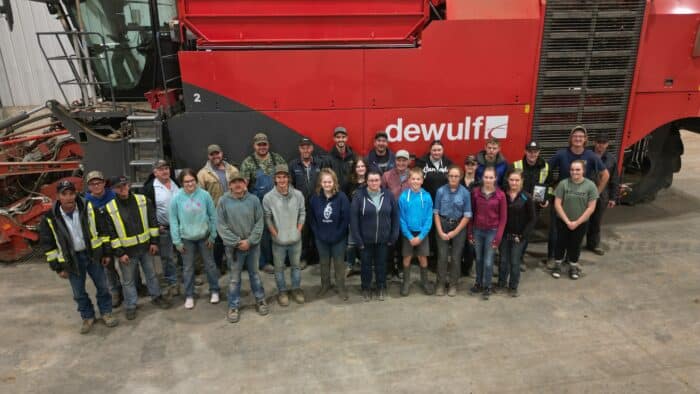
Camps isn’t alone in shying away from using TFW programs. The CFIB report said 54 per cent of employers reported that it took more than six months to process applications, and 15 per cent reported it took longer than 12 months. Forty-eight per cent of employers reported struggles with language barriers and 37 per cent reported foreign employees’ unfamiliarity with Canadian workplace culture, as reasons why they didn’t pursue TFW’s.
To fill seasonal employment positions, Camps has looked towards local community members who may want a more flexible work schedule. For seed cutting in the spring, he hires parents who may need to work around childcare obligations.
“A lot of these employees will be moms that have kids going to school. So, seed cutting we do during school hours. We don’t work extended hours when we cut seed,” Camps says. They’ll start the seed cutting season earlier in the year than other farms do to make sure they’re keeping their seed cutter employees during the set work hours.
On Maynard’s farm, he dips into the local retirement pool to fill his seasonal staffing needs. The semi-retired workforce will work the busy seasons on the farm during the spring and fall.
“There’s a large number of, I guess I would call them baby boomers, that have done other things throughout their career, and have retired,” Maynard explains. “Many of them end up coming here just to maybe help out with the potato harvest in the fall. And many of them find that they enjoy it, and they are more than willing to come back in the spring and help us put the next crop in.”
Retired workers account for a large amount of Canadian ag workers, according to CFIB. Seventy per cent of ag businesses found recruiting retired workers to be helpful. CFIB noted retired workers have the skills and the expertise that ag businesses desperately need.
For his fulltime permanent staff Maynard has been able to hire all local skilled employees who have agricultural backgrounds.
Retaining Workers of the Farm
Flexibility and listening to the needs and wants of your employees are the name of the game when it comes to retaining workers both Camps and Maynard have found.
On Farm Boys, Maynard has focused on providing for his employees the same as if they were working any other jobs giving them paid time off and a benefits package. They make sure each week their employees get days off so that they’re not working a full seven days.
“We spend a lot of our time making sure that nobody’s getting burnt out. And that may mean that we need to keep an extra couple people on the payroll around here to make sure that if somebody has a doctor’s appointment, a dentist’s appointment, maybe a graduation, etc. we don’t want them to miss it — family comes first, and farming come second,” Maynard says.
Farm Boys has also implemented a registered retirement savings plan (RRSP) contribution where the company (farm) will match contributions up to a certain amount. Health and dental coverage are also offered to all full time and seasonal employees.
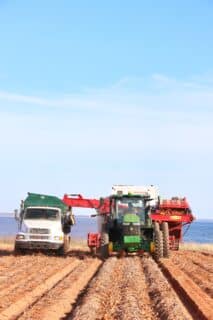
“There’re always new ways to make things better for not just the company but for the employees. And we’re always more than willing to sit down and listen to other farms ideas,” Maynard adds.
In the CFIB report, it was noted 28 per cent of Canadians don’t choose salary as one of the most desirable aspects of a job. Instead, non-salary benefits such as insurance, days off and flexible hours, workplace culture, and working close to home were selected as the most desirable aspects of a job.
On CP Farms they’ve taken a similar approach as Farm Boys with their employees. With the Mennonite workers, they’re all given Sundays off, and the seasonal seed cutters work set hours. Camps focus is to treat all his employees reasonably and how he himself would want to be treated.
“We have a safety program in place where we make sure everybody feels safe at their job and may provide like a hot supper, or a hot lunch or on a really hot day, we might bring ice cream or something like that, to kind of help with the crew morale,” he adds.
CP Farms is certified in the AgSafe Alberta program. This means every employee who steps foot on the farm must go through an hour-long safety training program. At the start of harvest every year they will do a refresher on the training program with every employee sitting through it no matter how long they may have been working on the farm.
Changing Times for Ag Labour
Staying adaptable is paramount in keeping the operation running, including when it comes to employees. The demands for farm employees have undergone significant changes over the years. Technological progress has led to a decrease in the workforce required to run certain pieces of equipment or complete various tasks.
“When we started out, we grew 250 acres (of potatoes), and we did our harvest with about the same number of staff as we do now in 1,750 acres. I would say that the number of staff has been equal, or maybe a slight increase, but that’s drastically been reduced if you look at it on a per acre basis,” Camps explains. He adds that equipment sizes have become larger which has led to this reduction in the number of employees needed to do tasks.
Farms across Canada are shifting to include more technology. The RBC report noted in 2020, over 50 per cent of farms who were investing in new technology noted a decrease in operating costs.
“While automation reduces the need for on-farm labour it also creates new jobs for highly skilled workers,” RBC said.
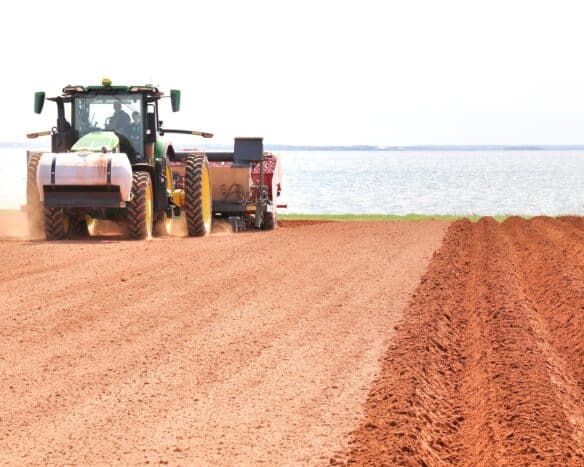
In the RBC report, it offered potential solutions to address the skilled labour shortage. It said through short, medium, and long-term policies, Canada can establish the digitally savvy agricultural workforce needed. To offset the short-term skills crisis, RBC said Canada will need to accept 30,000 permanent immigrants over the next decade to establish their own farms and greenhouses or take over existing ones.
“To meet our medium and long-term goals, we’ll need to build a new pipeline of domestic operators and workers by bolstering education and increasing the R&D spending behind productivity-enhancing automation,” the report said.
“Other nations, like Japan and New Zealand are rapidly deploying national strategies to tackle similar challenges. They are offering incentives to farm operators who become more autonomous or unlocking pathways for foreign skilled workers and new farmers to enter their industries. Canada needs to act fast.”
The Canadian government has been making moves to try and reduce ag labour shortages. Earlier this year the federal government extended the Agri-Food Pilot until May 14, 2025. The Agri-Food Pilot helps facilitate the transition of experienced workers in agricultural and food industries to permanent residency in Canada.
For those running farms currently though, they know their focus needs to be on providing for the employees they have even if it means they themselves aren’t always doing the farm tasks they’d like to be doing.
“My whole upbringing was working on that large potato farm for my grandfather. And some of them favourite memories that I have throughout that part of my career, I don’t get to exercise those anymore,” Maynard says. “It’s not all what it’s cracked up to be when you’re stuck in the management position.”
Header photo — A staff meeting at CP Farms Ltd. in Barnwell, Alta. Photo: CP Farms Ltd.
Related Articles
Fewer People Working in Canadian Ag

